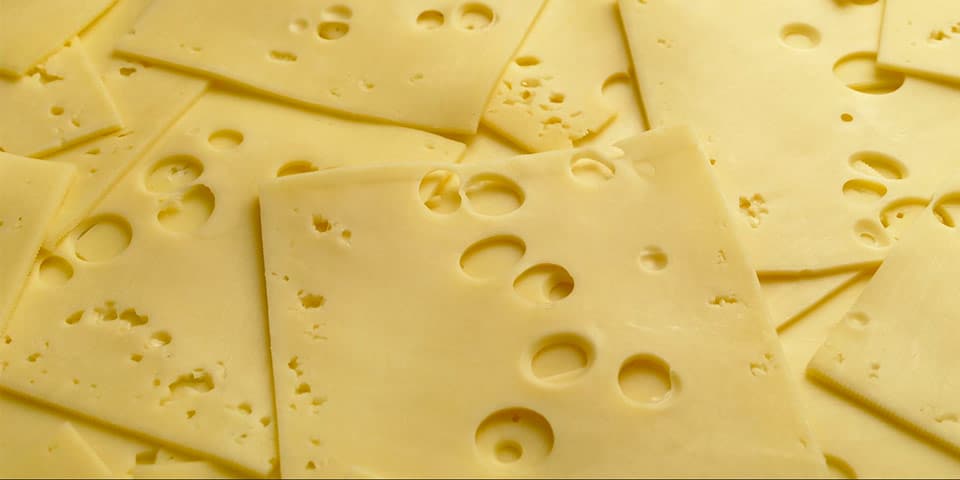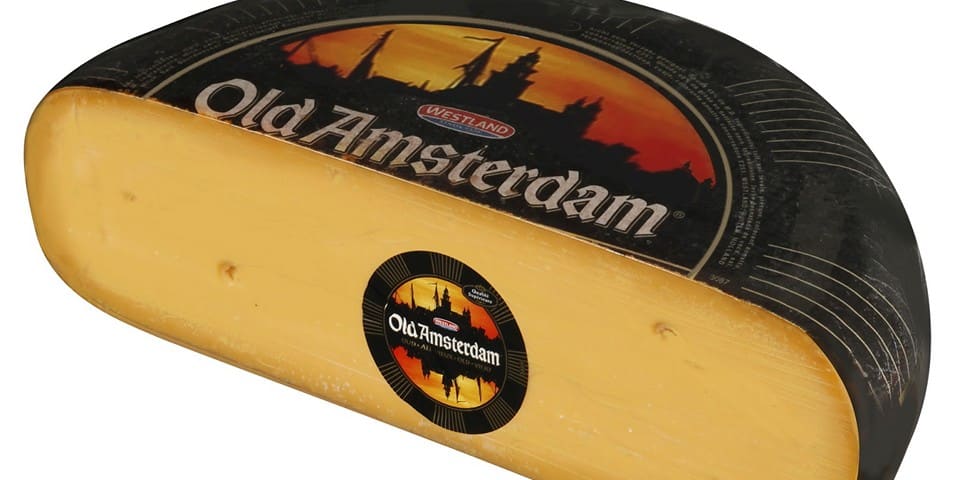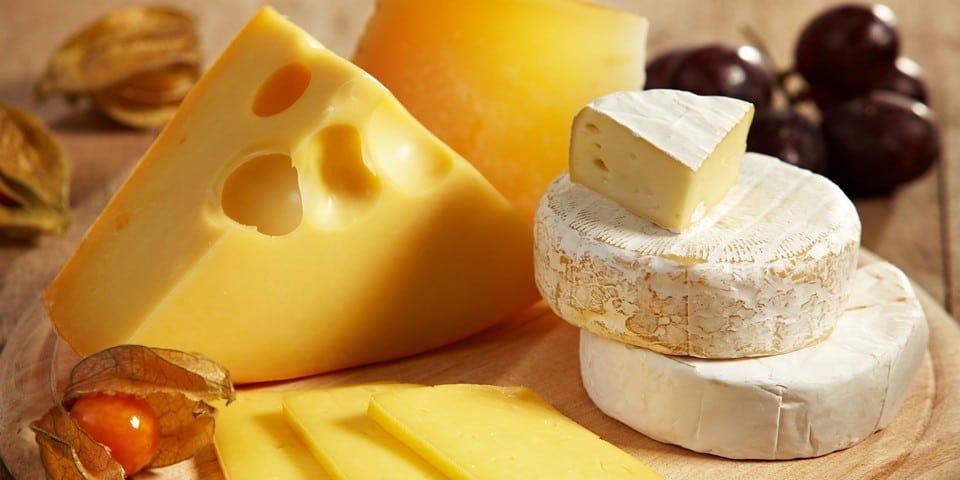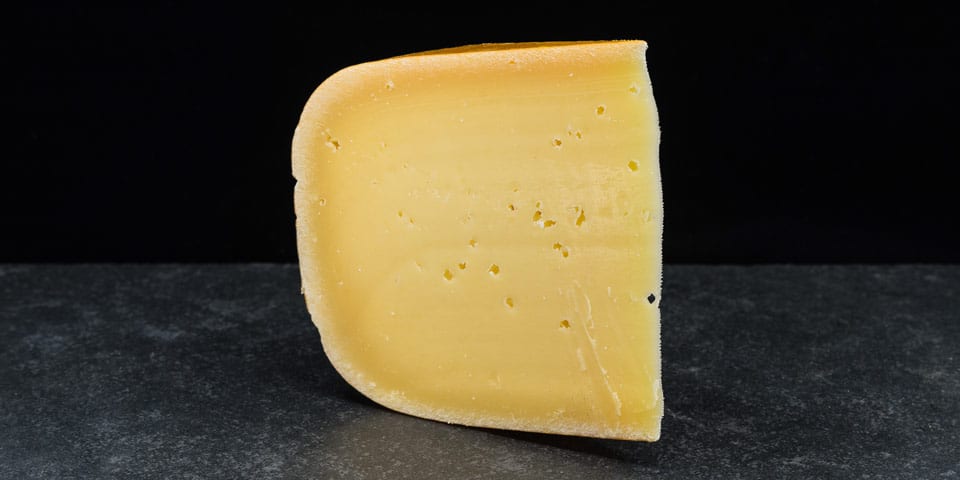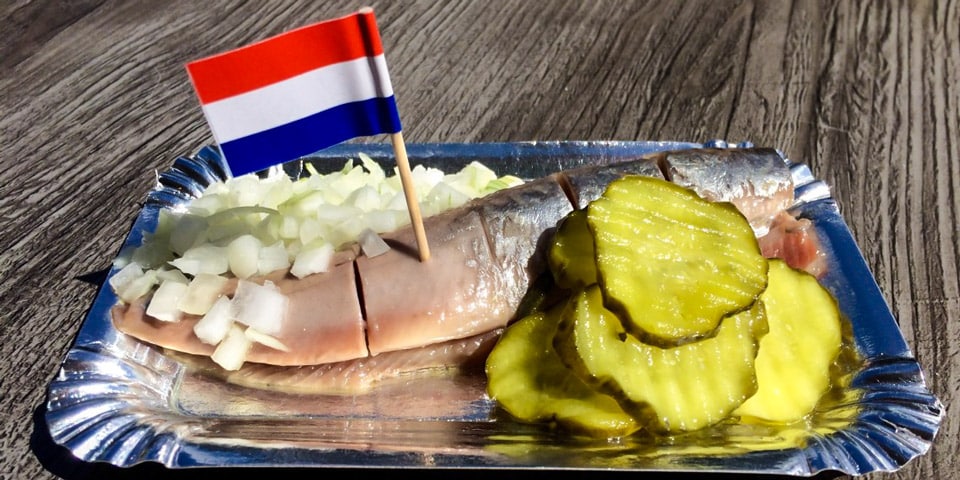Maasdam is a masterpiece of Dutch cheese making with well-deserved worldwide recognition, incorporating the best Swiss traditions. The cheese is famous for its large holes, which can be up to 4 cm in diameter. Maasdam can be unmistakably found even with closed eyes, thanks to its pungent aroma and sweet fruity taste. Do you want to get to know the non-volatile Dutchman better? You are welcome to the article.
How did
By the name of the cheese, it is easy to guess that its homeland is the city of Maasdam, located not far from Rotterdam (Rotterdam) in the southern part of Holland.
The impetus for the start of production was the desire of the Dutch cheese makers to surpass the Swiss masters and bring their own cheese market to the world level.
Back in the XIV century, the first technology for making cheese was developed, which could replace the Swiss Emmental.
The Dutch sought to create a unique product with original characteristics. They did not seek to "create" an analogue of the popular Swiss "brother".
A tart nutty flavor and large, rounded, dense eyes have become the hallmarks of the new cheese.
Finally, the technology of cooking Maasdam was formed only by the 80s of the twentieth century. Its author is a cheese maker who worked on a dairy farm for Sis Botercooper and Bastien Bars.
The young, growing company Bars quickly conquered the cheese field of the world business thanks to its constant work on the search for new technologies and the recipe for its bright cheese. The latter played a significant role in the fact that the French corporation Groupe Bel www.groupe-bel.com paid a considerable amount of money to join Bars to her holding.
The French immediately invested heavily to bring a new variety of Dutch cheese to the market. It is interesting that the manufacturers could not decide on the name for a long time. At various times, Maasdam cheese bore names such as Bergomer, Westberg and Mirlander.
Production
Only farm milk is used to produce high-quality Maasdam. It is tested twice. First, the quality is tested in a farm environment, then after transportation - at a cheese-making plant.
Milk is coagulated by rennet. It converts the liquid fraction into a gelatinous curdled mass. Modern rennet is obtained not only from the stomachs of calves, but also using biotechnological methods - this means that this cheese is suitable for vegetarians who have not excluded dairy products from their diet.
At the stage of clotting, starter cultures are also added - propionic acid bacteria. They are responsible for the formation of large eyes in the cheese. In the course of their vital activity, bubbles of carbon dioxide (CO2) are formed, which cannot come out through the dense cheese mass. By the way, the holes are not an easy distinctive feature of the variety. They are sort of an indicator of the maturity of the product.
It is worth noting that the role of propionic acid bacteria is not limited to just "making" holes. They also:
- give Maasdam the famous nutty flavor with sweet notes, producing propionic and acetic acids and proline;
- are inhibitors of the growth of unwanted microflora;
- have a lipolytic effect (slightly break down milk fats).
The next step in the production of Maasdam is pressing. The curd curd is poured into "cheese molds" and sent under oppression to remove excess liquid.
When the whey is completely glass, the heads of the future cheese are "bathed" in a bath with brine (water and salt).
The final stage is the ripening of the cheese. The heads are placed on wooden shelves for natural aging. The indoor humidity is 85% and the temperature is 7-12 degrees for the first week, 18-22 degrees for the following days. The ripening process lasts from 1 to 3 months. The speed largely depends on the selected strain of propionic acid bacteria.
Today Maasdam accounts for approximately 15% total production cheese in Holland.
Characteristic
Maasdam is a semi-hard cheese made from cow's milk. At the first stage of maturation, it is similar to Gouda and Edam. With aging, it acquires individual characteristics.
The shape of the cheese heads is round with smooth edges. Some manufacturers make wax or paraffin casing. The average weight of the Maasdam head varies from 6 to 12 kg.
The cut color is soft milky, has a golden hue. The skin is bright yellow. The consistency is dense, homogeneous with large eyes of regular round shape. The larger the holes, the more aged the product.
The aroma of the product is recognizable, specific: spicy, but sweet. The flavoring composition consists of spicy, sweetish notes with a nutty nuance. Some variations have a bitter taste.
How they eat
Like most cheeses, to fully experience the taste and aroma, Maasdam is recommended to be eaten separately from other products. A traditional option for European gastronomic culture is a cheese platter. Several types of cheese are cut into slices or cubes and served on a large platter with bread, fresh vegetables and fruits. It is usually accompanied by wine or suitable drinks.
The Dutch prefer to combine Maasdam with Merlot, Sauvignon Blanc, Chardonnay. Champagne or any other white sparkling wine is a great pairing for cheese.
Maasdam ranks among the top cheeses with ideal melting properties. Therefore, it is perfect for making hot sandwiches, pizza and pasta topping.
It is impossible not to mention the fondue. This is a warm Swiss-born dish. For its preparation, several types of cheese are melted in hot white wine in a special bowl and seasoned with spices. Bread skewered on skewers is immersed in a slightly cooled mass and thus eaten. Maasdam is a great choice for fondue. Although for a fuller taste, it must be paired with some kind of spicy cheese.
Manufacturers
On sale there are Maasdam of Dutch, German, French, as well as Russian manufacturers (in domestic stores). The leaders of the cheese market are: Uniekaas, Frico, Damtaler, Jagibo - the Netherlands, President - France, Nordmilch - Germany.
Maasdam Gold from Uniekaas has excellent taste. Its taste is bright and balanced, the texture is very delicate, but at the same time it is quite dense.
The product from the Dutch company Jagibo has a spicy taste and attractively low cost (8-12 euros per 1 kg). The French version of the cheese (from President) is sweeter but less dense. The hole size is also smaller than the Dutch counterparts.
Maasdam Damtaler is the most poignant of the options described.
It also has an excessive bitterness in taste. The German version is not for everyone, since the aroma is not pronounced, the taste is muted, the structure is loose.
Domestic maasdam is often sold immature. In this connection, its aromatic and taste properties are usually inexpressive and the consistency is rather soft (in comparison with foreign cheese). Its price starts from 6 euros rubles per 1 kg.
Recipe at home
In today's world, buyers are increasingly faced with counterfeit dairy products. Therefore, many people think about how to cook this or that product at home.
This is not to say that the procedure for creating a homemade Maasdam is elementarily simple, but still it is quite possible to cook it in your own kitchen.
Required Ingredients:
- Whole cow's milk - 12 L
- 1% cow's milk - 2 l
- Thermophilic culture - ¼ tsp
- Propionic acid bacteria - 1/8 tsp
- Calcium Chloride - 3.75 ml (dissolve in 60 ml of cold water)
- Rennet - 3.75 ml (dissolve in 60 ml of cold water)
- 18% saturated brine
- Cheese wax
20 steps to make Maasdam:
- First of all, pour milk into an enamel bowl and heat it to 31 degrees. We control the temperature with a thermometer.
- Next, add a thermophilic culture and propionic acid bacteria. Let it stand for 5 minutes and mix the milk thoroughly to distribute the microorganisms evenly. Leave to ripen under the lid for 30 minutes.
- Then mix and add calcium chloride solution. Shake again thoroughly with a whisk and pour in the rennet solution.
- We cover the pan with a lid, wait 40 minutes. The temperature should still be 31 degrees. During this time, a clot forms from the milk.
- After 40 minutes, a "clean compartment" test should be performed. With a smooth knife, cut a little the clot. If the edges of the incision are easily separated from each other, then the folding procedure was successful. Otherwise, you should wait another 10-15 minutes and check again.
- Using a large knife (or a special whisk), cut a dense clot into cubes with a side of 1-1.5 cm.
- Mix gently for about 20 minutes using a large spoon or whisk. We observe the temperature regime (31 degrees).
- We leave the mass for 10 minutes, so that the curd grains settle to the bottom. Meanwhile, we heat 5 liters of water to 31 degrees.
- Drain off such an amount of whey so that you can see the surface of the settled clot. It is convenient to do this with a sieve and mug.
- We immerse the sieve ¾ in a saucepan and scoop out the liquid that has accumulated in it.
- Add warm water in an amount equivalent to the withdrawn whey. Increase the heat slightly and heat the mass to 39 degrees for 30 minutes (after reaching the required temperature), stirring constantly.
- Cast off 3 cups of whey and add cold water to bring the temperature down to 36 degrees. Stir and leave for 10 minutes for the cheese grains to settle.
- Pour the mixture into a cheese colander, covered with gauze and placed over a large container.
- Leave for 10 minutes to drain the whey.
- Pull the cheesecloth tightly to avoid the formation of folds on the head of the cheese. On the mass in a cheese colander, set a press weighing 11 kg for 15 minutes.
- Next, remove the press and take the cheese out of the mold, change the gauze to dry and put it back in the mold under the 11 kg press for 4 hours.
- When the pressing is finished, place the head in 18% saline solution for 18 hours (after 9 hours the cheese should be turned over).
- After the allotted time, we take out the cheese from the brine, put it on a drying mat and dry for 2-3 days, turning the head over every 6 hours.
- We heat the cheese wax to 75 degrees. We cover Maasdam with 2-3 layers of wax by dipping-cooling or smearing with a brush.
- The final stage - we send the cheese to ripen at 4 degrees (refrigerator) for 2 weeks, then for 4 weeks at 18 degrees, turning it every day.
Ready cheese can be stored in the refrigerator for up to 1 year.
On Youtube you can find many video tutorials on how to cook Maasdam at home, I recommend the recipe from the cheese maker Daniil Pervachenko:
Calorie content and useful properties
Maasdam belongs to the medium fat category of cheeses. It contains 24-30% of fat. In 100 grams of the product, 360 kcal is found, which are distributed into:
- Protein - 28 g
- Fat - 28 g
- Carbohydrates - 0 g
Like all dairy products, Maasdam is an excellent source of energy, fats, proteins, vitamins (riboflavin, B12, A) and minerals (calcium, iodine, phosphorus and zinc).
In addition, research in recent years has shown that eating cheese after meals can help reduce the likelihood of tooth decay. Because cheese contains calcium, phosphorus and casein, it protects teeth from demineralization. And the saliva released when chewing it buffers the acids formed in dental plaque.
Despite all the advantages, do not forget that Maasdam is a fairly fatty food. Excessive use of it can lead to a rise in cholesterol levels. Therefore, the amount of cheese in the daily diet should not exceed 40 g.
That's all I wanted to tell you about the famous cheese. Live openly, travel profitably and remember: "Big eyes are not only beautiful for women!"
